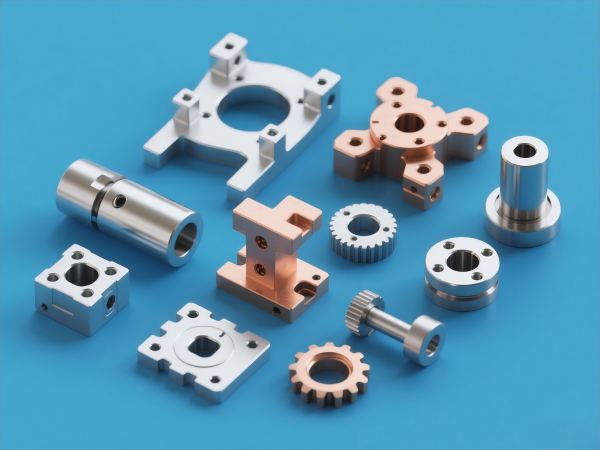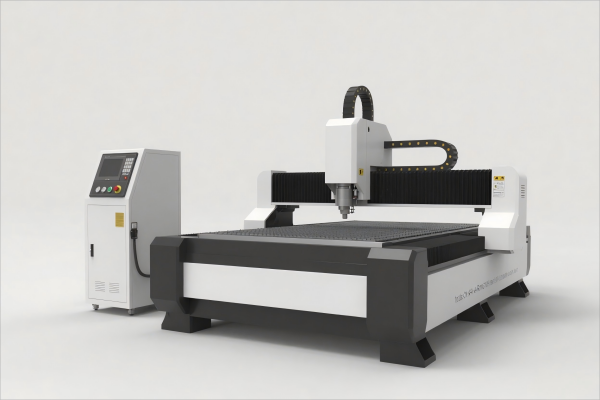In the dim glow of fluorescent lights, where the scent of cutting oil mingles with the dreams of aspiring machinists, CNC training begins not with textbooks, but with the ache of understanding that precision is both a destination and a lonely path. There’s something profoundly moving about watching someone’s first encounter with a CNC machine – that moment when they realize they’re not just learning to operate equipment, but to speak a language written in coordinates and feed rates, carved into metal with the weight of their hopes.
The Solitary Symphony of CNC Training 🌙
CNC training is perhaps one of the most introspective journeys in modern manufacturing. Unlike other trades where muscle memory develops through repetition, CNC training demands a different kind of intimacy – one between mind and machine, between human intention and mechanical precision. Every student who enters a CNC training program carries their own story, their own reasons for seeking solace in the predictable world of G-code¹ and spindle speeds.
The beauty of CNC training lies not in its complexity, but in its honest simplicity. Here, in the gentle hum of servo motors and the whispered promise of repeatability, students find something rarely offered in our chaotic world: the comfort of absolute precision. When everything else feels uncertain, CNC training provides the reassurance that some things can be exact, measured, and trusted.
There’s a melancholic poetry in watching trainees struggle with their first coordinate systems. The XYZ axes become more than mathematical concepts – they become the framework for rebuilding confidence, one precisely positioned hole at a time. CNC training doesn’t just teach technical skills; it offers redemption through accuracy 💫.

The Emotional Landscape of CNC Training Fundamentals
Every CNC training program begins with the same sacred rituals. Students gather around machines that dwarf their confidence, listening to instructors whose weathered hands tell stories of countless parts machined, countless mistakes learned from. The initial curriculum feels overwhelming – safety protocols², programming languages, tooling geometries – yet within this complexity lies a strange comfort.
The Architecture of Modern CNC Training
- Safety Consciousness: Before touching a single button, CNC training instills a profound respect for these powerful machines. Students learn that safety isn’t just about avoiding injury – it’s about protecting the dreams embedded in every workpiece.
- Mathematical Foundation: Coordinate geometry becomes poetry when viewed through the lens of CNC training. The Cartesian coordinate system³ transforms from academic abstraction to practical salvation.
- Programming Fundamentals: Learning to write G-code through CNC training feels like composing melancholic verses where every line must be perfect, every semicolon precisely placed 📝.
| Training Phase | Emotional Journey | Technical Focus | Duration |
|---|---|---|---|
| Foundation | Overwhelming curiosity | Safety, basics, math | 2-4 weeks |
| Programming | Frustrated determination | G-code, CAM software | 4-8 weeks |
| Operations | Cautious confidence | Setup, running parts | 6-12 weeks |
| Advanced | Quiet mastery | Multi-axis, optimization | 3-6 months |
The Profound Intimacy of Hands-On CNC Training
There’s something deeply personal about CNC training that can’t be captured in online tutorials or theoretical discussions. The first time a student’s trembling finger hovers over the cycle start button, knowing that months of CNC training have led to this moment – it’s both thrilling and terrifying. The machine doesn’t care about your anxiety; it simply executes the program with indifferent precision.
CNC training teaches patience in ways that modern life rarely allows. When a program runs for forty-seven minutes to complete a single part, students learn to sit with their thoughts, to find peace in the methodical removal of material. There’s meditation in monitoring feeds and speeds, a zen-like quality to watching aluminum chips curl away from the cutting edge 🌀.
The relationship between student and machine during CNC training evolves through predictable stages: fear gives way to respect, respect to understanding, understanding to a kind of mechanical empathy. Advanced students often describe feeling the machine’s “mood” – sensing when something isn’t quite right through subtle changes in sound or vibration.
The Bittersweet Reality of CNC Training Programs
Not all CNC training programs are created equal, and this disparity carries emotional weight. Community colleges offer CNC training with the gentle patience of institutions that understand their students often come from broken places, seeking stable careers in an unstable world. Private trade schools promise faster results but sometimes lack the depth that true CNC training requires.
Comparing CNC Training Approaches
| Program Type | Emotional Atmosphere | Technical Depth | Career Outcomes |
|---|---|---|---|
| Community College | Supportive, nurturing | Comprehensive theory | Strong foundation |
| Trade School | Intensive, focused | Practical skills emphasis | Quick employment |
| Apprenticeship | Mentorship-based | Real-world application | Industry connections |
| Online Programs | Isolated but flexible | Limited hands-on | Supplemental learning |
The most effective CNC training combines theoretical knowledge with emotional support. Students need to understand not just how to program a machine, but why certain approaches work better than others. They need to develop the intuition that comes from making mistakes in a safe environment, guided by instructors who remember their own journey through CNC training.
Advanced CNC Training: The Poetry of Precision 🎭
As students progress through CNC training, they encounter increasingly sophisticated concepts. Multi-axis machining introduces a complexity that can feel almost philosophical – the same point in space can be reached through infinite combinations of axis movements. Students learn that efficiency isn’t just about speed; it’s about elegant solutions that minimize tool changes and setup time.
CAM software⁴ training represents another emotional milestone in CNC training. Watching toolpaths generate automatically feels like magic, yet understanding the logic behind these paths requires a deep appreciation for cutting forces, material properties, and tool geometry. The software becomes a translator between human intention and machine capability.

The Emotional Stages of Advanced CNC Training
⟡ Wonder: First exposure to 5-axis machining capabilities ⟡ Overwhelm: Realizing the complexity of modern manufacturing ⟡ Determination: Pushing through difficult programming concepts
⟡ Breakthrough: The moment when advanced concepts suddenly make sense ⟡ Confidence: Ability to troubleshoot and optimize independently ⟡ Mastery: Teaching others and continuing to learn
The Marketplace Reality of CNC Training Graduates
The job market for CNC training graduates reflects both opportunity and harsh reality. Entry-level positions often require skills that basic CNC training programs don’t always provide. Employers want operators who can think critically, solve problems independently, and adapt to new technologies. This gap between CNC training curriculum and industry expectations creates anxiety for students approaching graduation.
However, dedicated students who embrace continuous learning find that CNC training opens doors to careers with genuine stability. CNC machinists, programmers, and setup operators remain in high demand across industries. The skills developed through comprehensive CNC training – precision thinking, attention to detail, problem-solving under pressure – transfer remarkably well to other technical fields 🔧.
The Technology Evolution Challenging CNC Training
Modern CNC training must address rapidly evolving technology. Industry 4.0⁵ concepts, IoT integration⁶, and artificial intelligence are changing how CNC machines operate. Training programs struggle to keep pace with these changes while maintaining focus on fundamental skills that remain constant.
The emotional impact of technological change on CNC training students can’t be understated. Many enter programs seeking stable careers only to discover that continuous learning is now a permanent requirement. The machines they learn on may be obsolete within a decade, yet the underlying principles of precision manufacturing remain timeless.
The Community Within CNC Training 💙
Perhaps the most unexpected aspect of CNC training is the community that develops among students. Shared struggles create bonds that extend beyond the classroom. Study groups form around particularly challenging concepts, and experienced students naturally mentor newcomers. The collaborative nature of modern manufacturing is reflected in how CNC training students support each other.
Instructors in quality CNC training programs understand their role extends beyond technical education. They become counselors, career advisors, and sometimes the only adults who believe in students’ potential. The relationships formed during CNC training often last throughout careers, creating professional networks based on mutual respect and shared experience.
Common Industry Problems and Solutions
Problem 1: High Dropout Rates in CNC Training Programs
Solution: Many students leave CNC training programs due to feeling overwhelmed or disconnected from practical applications. Successful programs address this by implementing mentorship systems pairing new students with advanced learners or industry professionals. Incorporate project-based learning that shows immediate practical results, allowing students to see progress quickly. Provide comprehensive academic support including tutoring for mathematical concepts. Create flexible scheduling options for working adults and maintain regular check-ins to identify struggling students early. Establish industry partnerships that provide guest speakers and potential job shadowing opportunities to maintain motivation.
Problem 2: Skills Gap Between CNC Training and Industry Requirements
Solution: Bridge the gap between academic CNC training and industry needs through enhanced industry partnerships and curriculum updates. Establish advisory committees with active manufacturing professionals who regularly review and update training content. Implement internship programs that provide real-world experience during training. Focus on problem-solving skills and critical thinking rather than just button-pushing. Include training on modern manufacturing concepts like lean principles and quality systems. Provide exposure to multiple machine brands and control systems. Emphasize soft skills including communication, teamwork, and continuous learning mindset essential for career advancement.
Problem 3: Limited Access to Modern Equipment in CNC Training
Solution: Many CNC training programs struggle with outdated equipment that doesn’t reflect current industry standards. Address this through creative partnerships with local manufacturers who may donate or lease newer equipment. Apply for grants specifically designed for workforce development and technical education. Implement shared-use agreements with other training institutions to provide students access to advanced equipment. Utilize high-quality simulation software that allows students to program and operate virtual versions of modern machines. Arrange regular field trips to local manufacturers so students can observe current technology. Consider mobile training units that bring modern equipment to multiple locations efficiently.
Glossary
¹ G-code: Programming language that controls CNC machine tool movements and operations ² Safety Protocols: Standardized procedures designed to prevent accidents and injuries during CNC operations ³ Cartesian Coordinate System: Three-dimensional coordinate system using X, Y, and Z axes for positioning ⁴ CAM Software: Computer-Aided Manufacturing software that generates toolpaths from CAD models ⁵ Industry 4.0: Fourth industrial revolution incorporating smart manufacturing and IoT technologies ⁶ IoT Integration: Internet of Things connectivity allowing machines to communicate and share data
Authoritative References
- National Institute for Occupational Safety and Health – “Guidelines for CNC Training Safety Standards” https://www.cdc.gov/niosh/topics/manufacturing/default.html
- Society of Manufacturing Engineers – “Best Practices in CNC Training Curriculum Development” https://www.sme.org/connect/career-resources/workforce-development/cnc-training/
- American Association of Community Colleges – “Manufacturing Training Program Effectiveness Study” https://www.aacc.nche.edu/research-data/research-topics/career-technical-education/
- National Science Foundation – “Advanced Manufacturing Workforce Development Research” https://www.nsf.gov/publications/pub_summ.jsp?ods_key=nsf19078
- Manufacturing Institute – “CNC Training Program Standards and Accreditation Guidelines” https://www.themanufacturinginstitute.org/research/skills-gap-manufacturing/